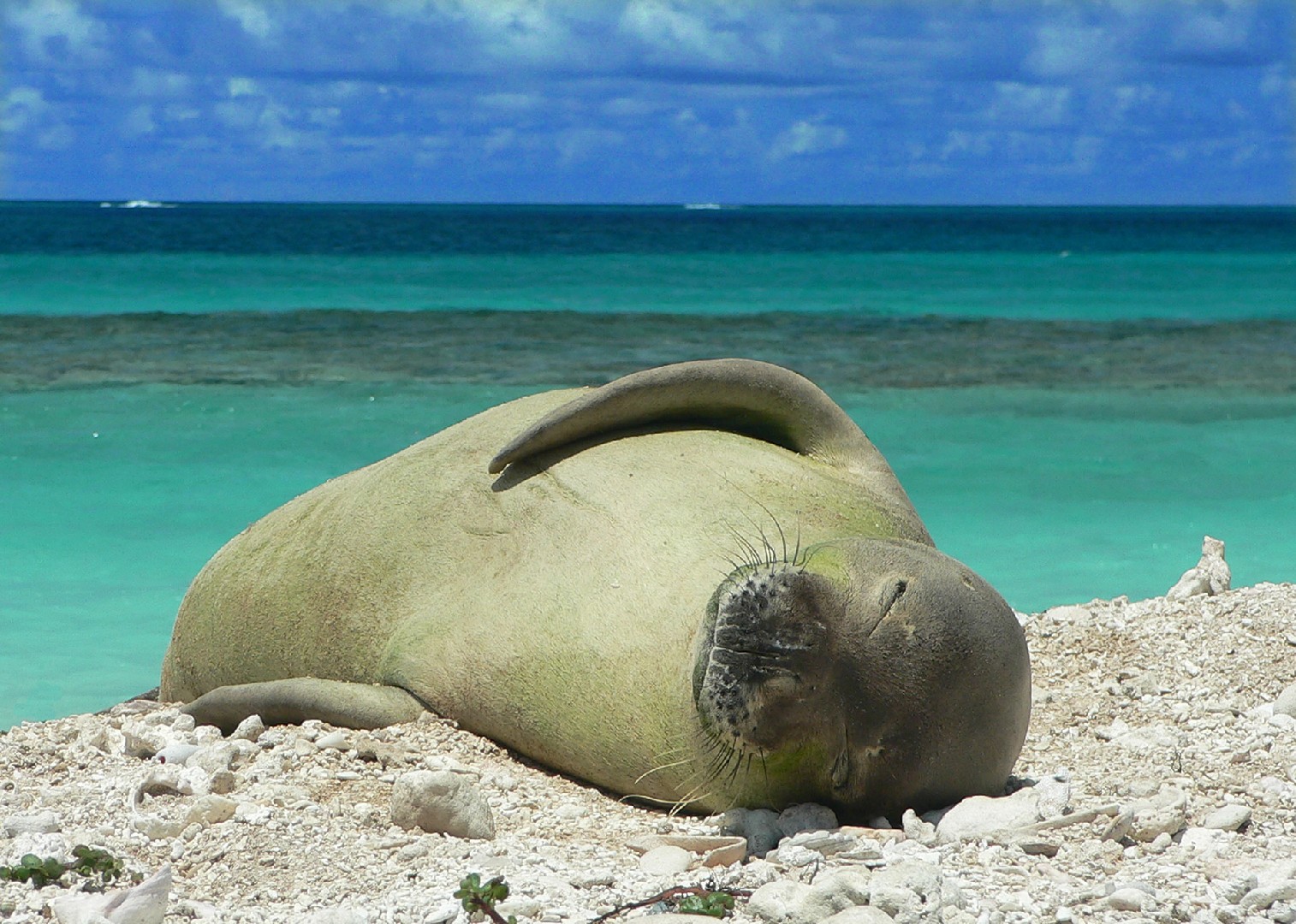Hawaiian monk seal
A species of Monk seals Scientific name : Monachus schauinslandi Genus : Monk seals
Hawaiian monk seal, A species of Monk seals
Scientific name: Monachus schauinslandi
Genus: Monk seals
Content
Description General Info
 Photo By MarkSullivan , used under CC-BY-SA-3.0 /Cropped and compressed from original
Photo By MarkSullivan , used under CC-BY-SA-3.0 /Cropped and compressed from original Description
Its grey coat, white belly, and slender physique distinguish them from their cousin, the harbor seal (Phoca vitulina). The monk seal’s physique is ideal for hunting its prey: fish, lobster, octopus and squid in deep water coral beds. When it is not hunting and eating, it generally basks on the sandy beaches and volcanic rock of the Northwest Hawaiian Islands. The Hawaiian monk seal is part of the family Phocidae, being named so for its characteristic lack of external ears and inability to rotate its hind flippers under the body. The Hawaiian monk seal has a relatively small, flat head with large black eyes, eight pairs of teeth, and short snouts with the nostril on top of the snout and vibrissae on each side. The nostrils are small vertical slits which close when the seal dives underwater. Additionally, their slender, torpedo-shaped body and hind flippers allow them to be very agile swimmers. Adult males are 300 to 400 pounds (140 to 180 kg) in weight and 7 feet (2.1 m) in length while adult females tend to be, on average, slightly larger, at 400 to 600 pounds (180 to 270 kg) and 8 feet (2.4 m) in length. When monk seal pups are born, they average 30 to 40 pounds (14 to 18 kg) and 40 inches (1.0 m) in length. As they nurse for approximately six weeks, they grow considerably, eventually weighing between 150 to 200 pounds (68 to 91 kg) by the time they are weaned, while the mother loses up to 300 pounds (140 kg). Monk seals, like elephant seals, shed their hair and the outer layer of their skin in an annual catastrophic molt. During the most active period of the molt, about 10 days for the Hawaiian monk seal, the seal remains on the beach. The hair, generally dark gray on the dorsal side and lighter silver ventrally, gradually changes color through the year with exposure to atmospheric conditions. Sunlight and seawater cause the dark gray to become brown and the light silver to become yellow-brown, while long periods of time spent in the water can also promote algae growth, giving many seals a green tinge. The juvenile coat of the monk seal, manifest in a molt by the time a pup is weaned is silver-gray; pups are born with black pelage. Many Hawaiian monk seals sport scars from shark attacks or entanglements with fishing gear. Maximum life expectancy is 25 to 30 years. 
General Info
Lifespan
25-30 years
Diet
Hawaiian monk seal primarily subsists on a marine diet, specifically favoring reef-dwelling animals like fishes, cephalopods, and crustaceans. Selective foraging habits enhance nutritional uptake, contributing to its overall health and survival.
Appearance
Hawaiian monk seal is a medium-sized marine mammal with a stout, torpedo-shaped body. Its thick, sleek skin is typically dark grey, sometimes lightening towards the belly. The species is recognizable due to its well-developed fore flippers and the lack of external ears. In terms of size, there are no notable differences between genders, with both sexes averaging about 7.5 feet in length. Young individuals tend to possess a lighter grey hue that becomes darker with age.
Behavior
Hawaiian monk seal is primarily solitary, utilizing coastal and underwater caves for resting. Notably, they exhibit unique single flipper waiving as a territorial display during breeding season. Adaptations for survival include effective camouflage and foraging dives of up to 18 minutes in duration. Migratory patterns are rare, signaling strong site fidelity.
Population
Decreasing
Scientific Classification
Phylum
Chordates Class
Mammals Order
Carnivores Family
Earless seals Genus
Monk seals Species
Hawaiian monk seal